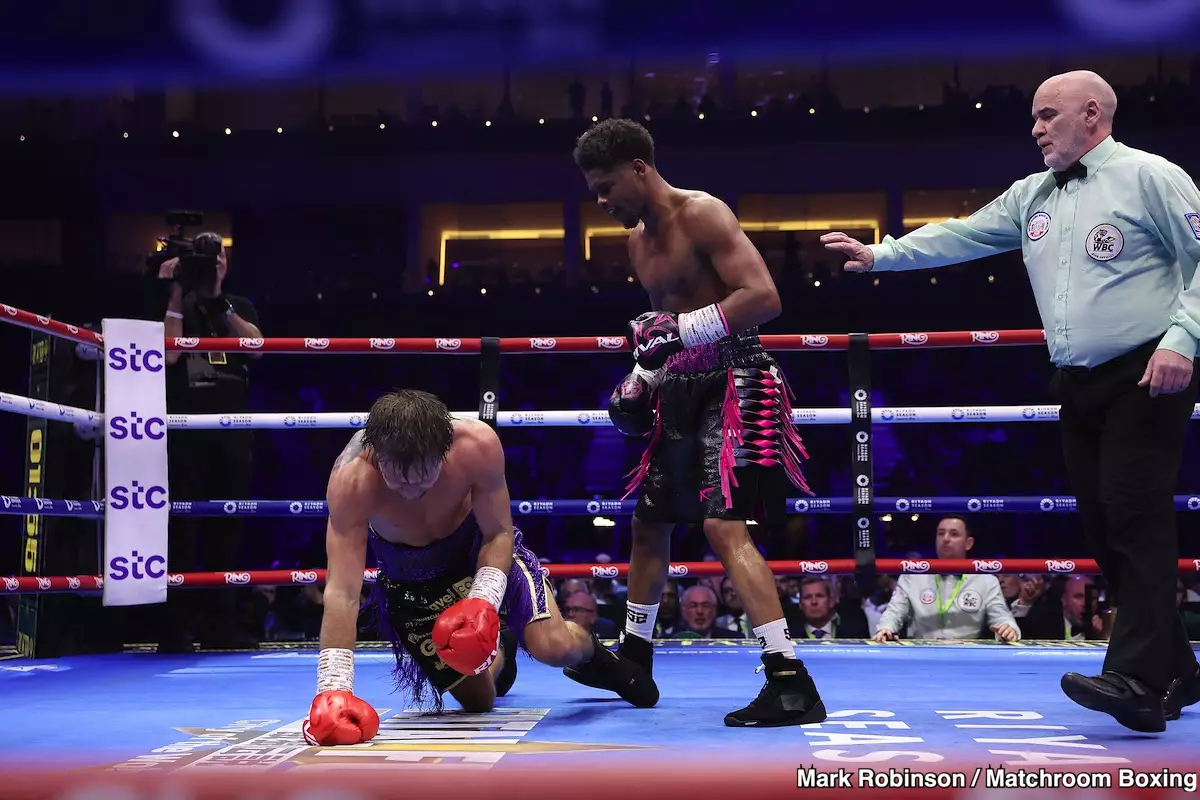Boxing is a sport steeped in tradition, rivalry, and the constant thirst for supremacy. In the lightweight division, names like Gervonta “Tank” Davis and Shakur Stevenson are becoming synonymous with both talent and controversy. Recently, Rolando “Rolly” Romero weighed in on the potential matchup between these two fighters, expressing a rather critical opinion on what he perceives as a lackluster possibility of a fight. Romero’s comments not only underscore his perspective on the fighters’ abilities but also highlight broader themes within boxing culture.
In a recent interview with Fighthype, Romero made waves by questioning why Davis would even consider clashing with Stevenson. His assertion was blunt: the fight would essentially boil down to Stevenson dodging punches, much like he did against Edwin De Los Santos. According to Rolly, Stevenson’s movement in the ring—described metaphorically as “jumping around like a grasshopper”—raises doubts about his willingness to engage in a serious contest against a powerhouse like Davis, who boasts an impressive knockout ratio. This sentiment raises the question of whether fights should be about spectacle, skill, or the sheer thrill of confrontation.
The crux of Romero’s argument lies in his assertion that Stevenson relies too much on his agility and evasiveness rather than showcasing knockout power. He provocatively questioned whether Stevenson would “jump out of the ring” to evade what he perceives as a sure knockout from Davis. This commentary serves as a critique not just of Stevenson, but of current boxing strategies that prioritize safety and technical execution over aggression and knockout power.
A common thread among boxing enthusiasts and professionals is the excitement surrounding knockouts. In the world of boxing, a knockout (KO) can often elevate a fighter’s status, while a series of decision wins may lead to criticisms regarding their fighting style. Romero’s emphasis on the need for Stevenson to secure knockouts—specifically, three consecutive KOs—before even considering a match with Davis speaks directly to the tension between boxing as a sport and boxing as entertainment. The very idea that skill and strategy could overshadow the thrill of a knockout highlights a divide in expectations about what fans want to see in the ring.
Romero’s critique of Stevenson’s fighting style also touches upon a broader issue within the sport: the commercialization of boxing. Promoters and networks often favor matches that generate buzz over those that may possess a more traditional notion of competition. As a result, fighters like Stevenson, who excel in technical skill but lack knockout prowess, may find themselves at a disadvantage in gaining mainstream appeal.
Where Stevenson is concerned, Romero acknowledged his technical prowess, labeling him as one of the “greatest technical fighters” of his generation. However, he didn’t shy away from expressing his frustration at what he sees as a wasted opportunity for entertainment. Stevenson’s approach to boxing—focused on precision and outmaneuvering opponents rather than delivering decisive blows—invites debate about the essence of the sport. Is boxing a platform for artistic expression or a brutal clash of strength?
Indeed, Stevenson’s previous fights have shown flashes of brilliance. However, his recent bout against Josh Padley, where he struggled to deliver an impactful performance, raises concerns about his readiness to face an opponent of Davis’s caliber. Although Stevenson achieved a knockout, the manner in which he did so was uninspired, failing to elevate fan excitement. This further fuels Romero’s argument that Stevenson needs to exhibit more aggression and finish his opponents decisively before stepping into the ring with fighters known for their knockout capabilities.
While Romero emphasized the lack of urgency for Davis to fight Stevenson unless the financial incentive is substantial, it’s essential to note that the boxing landscape is often navigated by the drift of money and reputation. High-stakes bouts come with hefty paychecks, but they also bring the weight of legacy, especially for a fighter like Davis, who aims to cement his place in boxing history.
Rolando Romero’s commentary on the proposed bout between Gervonta Davis and Shakur Stevenson encapsulates the ongoing debate about what boxing should represent. The clash of styles, the pursuit of knockouts, and the commercial pressures are all relevant aspects that make this sport both captivating and perplexing. As fans and analysts alike watch this narrative unfold, one can only speculate whether Stevenson will evolve into the knockout artist many are hoping to see, or if he will continue to be the master of technical finesse. Ultimately, boxing thrives on conflict, and how these tensions play out will determine the future of not just individual fighters, but the sport itself.


Leave a Reply